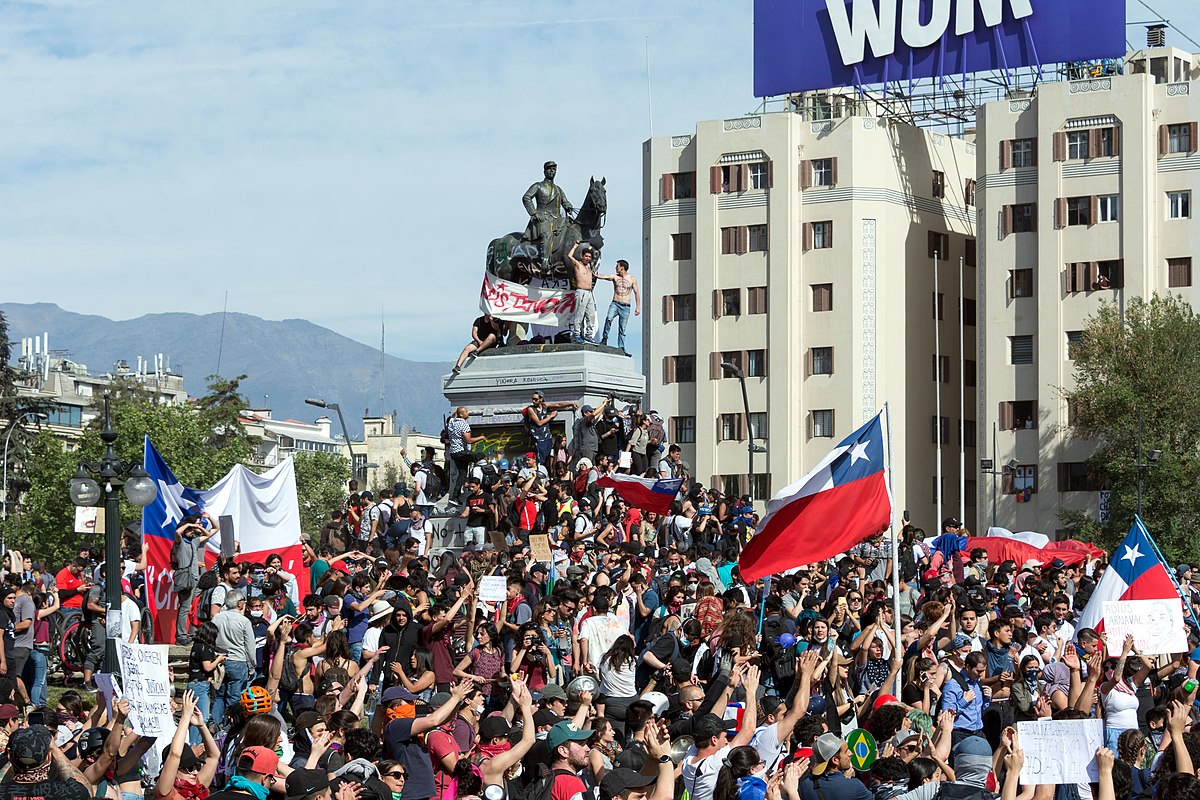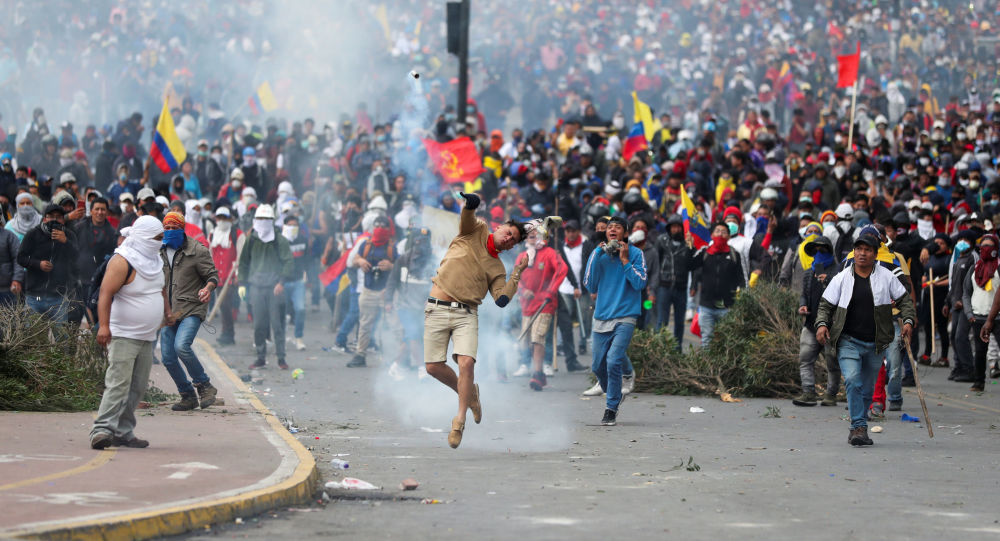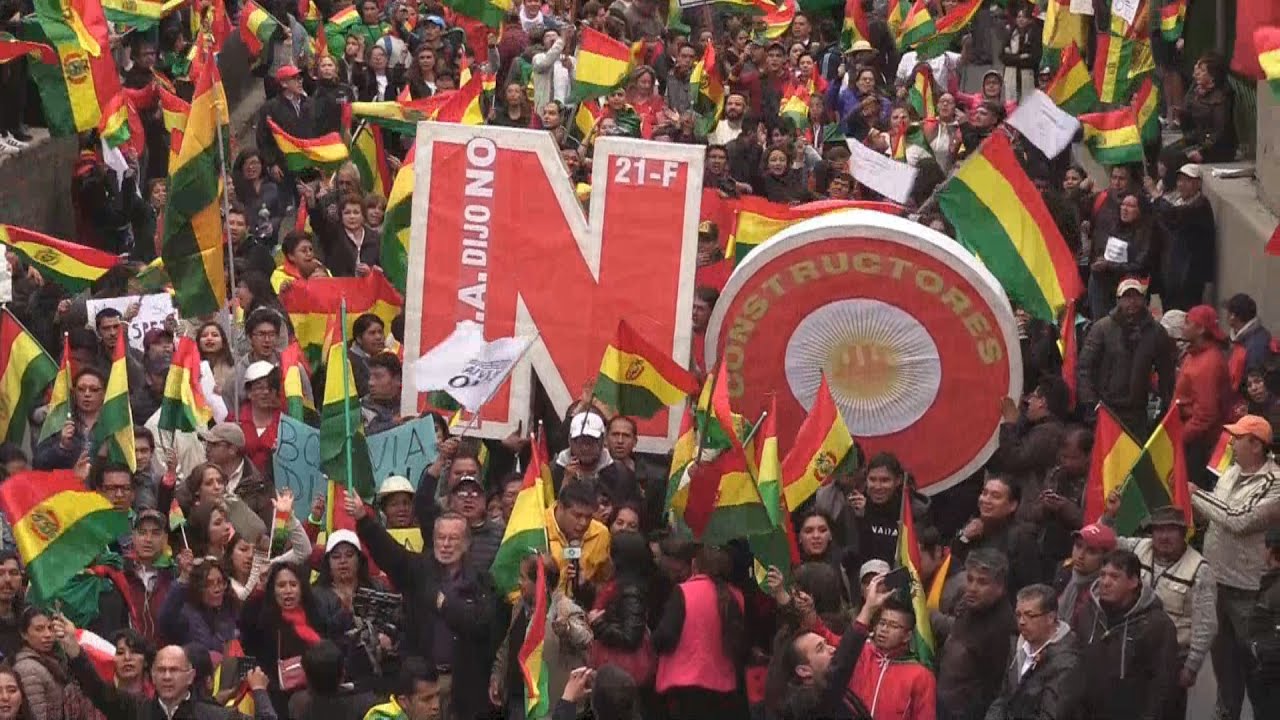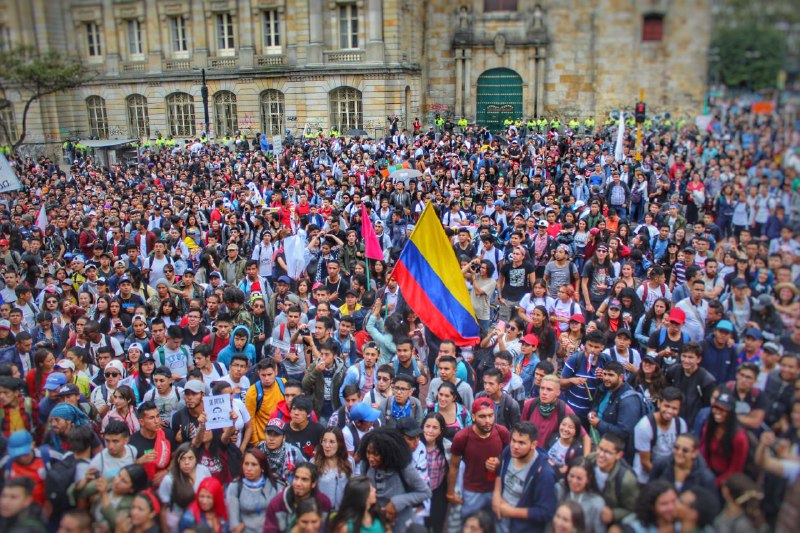RIO DE JANEIRO, BRAZIL – Thwarted prospects have burst the bubble for millions of Latin Americans. The protests in the most unequal region of the world are recurring at a dizzying pace, from Haiti to Chile; from Central America to the Andes.

To seek a straightforward rationale behind a region with two dozen countries and more than 600 million inhabitants would be futile, despite the efforts of many to try to build a kind of Latin American Spring – on a continent where seasons are notable for their absence – or to invent a plot orchestrated by Venezuela, which, although it can barely stand on its own, now has the potential to unsettle nearly the whole continent.
The thwarting of millions of hopes, the questioning of economic models such as neoliberalism and disillusionment with politicians, regardless of ideology, are the common fuels in all countries used to ignite flames that do not seem ready to be put out in the short term.
Latin America is a melting pot of protests in a world that has become a “cartography to be deciphered,” in the words of journalist and historian Pablo Stefanoni.
In some cases, because the quality of life worsens, as is the case in Argentina and Ecuador; also in Chile and, for years in Brazil, where the hopes of a middle class to which more and more people were joining were also defeated. The demonstrations in these countries and the less publicized ones of students in Colombia and Haiti cannot be grasped unless we also look at the French yellow vests, the protests in Hong Kong and, more recently, in Lebanon.
But social uprisings have been part of Latin America’s political landscape for decades, and they were at their height in the late 1990s and early 2000s. “There is a whole culture of social mobilizations that works as a pressure engine to demand the extension of rights and a reduction in historical social injustice,” explains Luciana Cadahia, a researcher at the Center for Advanced Latin American Studies in the Humanities and Social Sciences (CALAS-Andes).
The current protests arise in a context of deceleration and economic crisis. Latin America emerged virtually unscathed from the 2008 global crisis but is now the worst stricken region.

According to projections by IMF (International Monetary Fund) – an organization that is once again on the receiving end of almost all protests – the region will grow by 0.2 percent, barely anything in practice. In less than a year, the forecast has dropped from 1.4 percent to 0.6 percent (90 days ago). Meanwhile, Asian economies are expected to grow by an average of 5.9 percent and African economies by 3.2 percent.
Although each country has its own specific features, the end of the commodity boom overwhelmingly supports economic uncertainty. “In some parts, neoliberalism is failing; in others, national-popular projects have a fundamental problem that the region cannot address, which is the development model.”
“Even in the shift to the left-wing, progress has been redistributive, social policies that have democratized consumption. There were no profound changes, neither economic nor institutional,” says Stefanoni.
Income inequality has decreased since 2000, but today one in every ten Latin Americans (10.2 percent) lives under extreme poverty. In 2002, there were 57 million people living on the edge of poverty in the region.
Fifteen years later, the figure rose to 62 million. In 2008, there were 63 million, according to the United Nations Economic Commission for Latin America and the Caribbean (ECLAC).
“One of the common denominators is the thwarted hopes, the precariousness of the people who had recovered something and who now see how their desires and dreams are lost. This has aggravated a great anger,” says Arturo Valenzuela, undersecretary of state for Latin America during Barack Obama’s administration.
“The current popular protests are very much linked to the economic model that, since the nineties, they have tried to implement over and over again in the region,” says Cadahia, who, like other analysts interviewed, sees the different types of government adjustments as one of the common denominators for the protests.
“States have the role of protecting an economic model that does not generate jobs or need to reduce inequality gaps. So they fail to invest in key aspects such as education and technology. Institutions deteriorate, inequalities grow, and citizens begin to feel discomfort when they perceive how their daily lives, their day-to-day lives, worsen”.

In this sense, Cuban academic and feminist Ailynn Torres considers that the demonstrations “challenge the order of inequality, which the governments of the previous progressive cycle failed to effectively eradicate, and of poverty – which in fact decreased in the previous cycle, but progressively grew again after 2008, and very abruptly after 2015,” says the researcher from the Latin American Faculty of Social Sciences (FLACSO).
The authority of the political class was evident in recent weeks, even though the demand for new leaders has been growing for months, or even years. The source of instability is complete, as Stefanoni illustrates.
“In Chile, less than 50 percent of the electorate voted in the last election; in Bolivia, half the country believes there was fraud in the election; in Ecuador, [Rafael] Correa’s successor made a significant shift in his allegiances and ideological speeches; in Brazil, people voted with one of the favorites (Lula) arrested and indicted for corruption; in Peru, all the presidents ended up in prison for the Odebrecht case, and one killed himself.”
Therefore, it is not a matter of interpreting discomfort in the left/right axis. The last Latin Barometer already pointed this out. For 75 percent of the people, there is a realization that governance is only for the few and that governments do not uphold the interests of the majority.
According to the study, only five percent consider that there is a full democracy; 25 percent think that there are minor issues; 45 percent believe that there are major issues; 12 percent believe that what we see today cannot be called democracy. Furthermore, the average of those who consider Latin America as democratic is 5.4 on a scale of one to ten.
The disrepute of rulers does not necessarily mean a disillusion with politics, because Latin American societies are more than politicized. Valenzuela highlights the need to implement a number of political reforms that have not yet been achieved.

“There are presidents who are in the minority and think they are in the majority, but who do not have the support of Congress. All this generates a stalemate and a representation crisis,” explains the former US government official.
Oliver Stuenkel, professor of International Relations at the Getúlio Vargas Foundation (FGV) in São Paulo, feels that “the numbers tell a story and the economic and political elites are happy with those numbers, but the people’s experience is different”. Stuenkel cites the 2013 protests in Brazil as an example very similar in their roots to last week’s protests in Chile.
“What we have seen is a consequence of a very unequal society, not only from an economic perspective. It is necessary to see where the elites move, with whom they relate. It is also necessary to recall that the intellectual elite – journalists, analysts, including myself – failed to predict this. This is evidence that the financial, political and intellectual elite in Latin America has not been able to monitor and understand what is happening in society”.
The most paradoxical illustration of this detachment – beyond the autocratic blindness of Nicolás Maduro, who has been denying reality for years – may have been provided in recent days by the president of Chile.
Sebastián Piñera transitioned from a situation in which he celebrated an oasis in which his country (supposedly) stood, to a situation where pressure exploded. After saying that they were at war with an all-powerful enemy, he later praised the demonstrations that demanded his resignation and that of all his ministers.
Ailynn Torres, in line with other analysts and academics interviewed, is cautious about what is to come. “The results are uncertain and may not be much clearer when this critical phase is over. What is at stake goes much further; the people know this, and so do the governments”.
Source: El País

